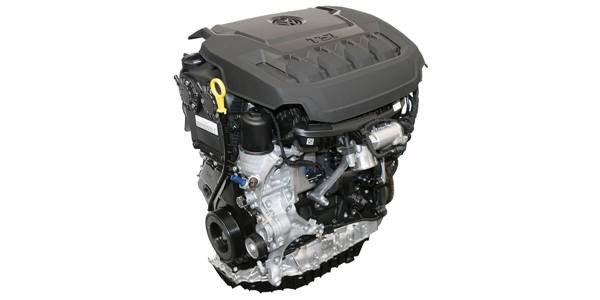The Volkswagen 2.0-liter turbo engine, technically known as the EA888 Gen3B, represents a significant advancement in engine technology. This updated powerplant builds upon the success of its predecessors, delivering an impressive combination of power, efficiency, and responsiveness thanks to innovative modifications to the traditional four-stroke cycle.
 A cutaway of the VW 2.0 turbo engine (EA888)
A cutaway of the VW 2.0 turbo engine (EA888)
The Evolution of the EA888
First introduced in 2009, the EA888 engine family marked Volkswagen’s shift towards smaller, turbocharged engines. This strategy aimed to combine the fuel efficiency benefits of downsizing with the power output of larger displacement engines. The 2.0-liter EA888 Gen3B continues this trend, offering notable improvements over its 1.8-liter predecessor found in models like the Passat, Jetta, Beetle, and Golf. While official EPA estimates may vary, the new engine is expected to deliver enhanced fuel economy and a substantial 20% increase in torque, reaching 221 pound-feet. This performance boost is achieved through numerous updates to core engine components, including the cast-iron block, aluminum-alloy pistons, cylinder head, and valve springs.
The Budack Cycle: A Unique Combustion Approach
A key innovation in the Vw 2.0 Turbo Engine is its implementation of a modified Miller combustion cycle, specifically the Budack cycle. Unlike the traditional Miller cycle, which closes the intake valves near the end of the intake stroke, the Budack cycle closes them much earlier. This modification results in prolonged effective combustion and faster airflow for incoming gases, optimizing the fuel-air mixture. The outcome is improved fuel efficiency and increased torque compared to the previous 2.0-liter EA888 engine.
Variable Valve Timing for Optimized Performance
The variable valve timing system on the intake camshaft plays a crucial role in the engine’s performance. This system allows the engine to switch between short and long valve opening durations depending on engine load. At low speeds and partial loads, shorter valve openings enhance efficiency. Under higher loads, the system switches to a longer valve opening duration, unleashing the engine’s full power and torque potential.
Power and Efficiency in Harmony
The VW 2.0 turbo engine generates a peak output of 184 horsepower (in the Tiguan application) at 4,400 rpm, maintaining this output until 6,000 rpm. The impressive 221 lb.-ft. of torque is available across a broad rpm range, from 1,600 to 3,940 rpm. This performance is achieved through a longer piston stroke (92.8 mm compared to 84.1 mm in the 1.8-liter version) and an increased compression ratio of 11.7:1, facilitated by a redesigned piston crown and combustion chamber. Advanced TSI injectors deliver fuel at higher pressures (up to 250 bar), with up to three injection sequences per stroke for optimal combustion.
Retained Features and Further Enhancements
The EA888 Gen3B retains essential features from its predecessors, such as chain-driven double overhead camshafts and twin balance shafts for smooth operation and improved oil scavenging. A new, sophisticated engine management system with four core processors constantly monitors and adjusts engine parameters for optimal performance. Friction reduction was also a priority in the engine’s development. For instance, the crankshaft main bearing diameter was reduced, and a narrower balance shaft chain was implemented.
The Future of the VW 2.0 Turbo Engine
Initially launched in the 2018 Tiguan, the VW 2.0 turbo engine is expected to power a wider range of Volkswagen models in the future. This versatile and efficient engine embodies Volkswagen’s commitment to delivering advanced powertrain technology.
